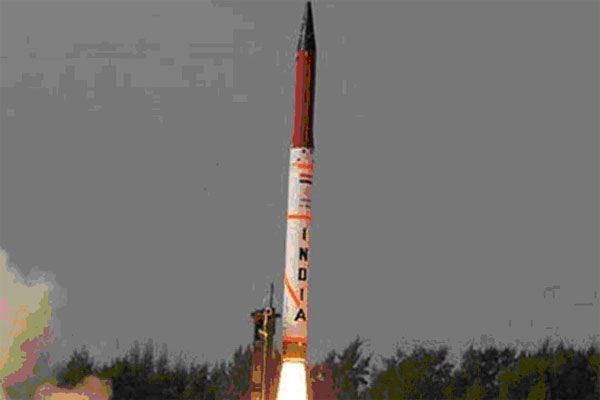Agni-5: How Does India’s Ballistic Nuclear Missile Compare With Chinese And Pakistani Counterparts
December 10, 2018
In April 2012, India entered into the Intercontinental ballistic Missile (ICBM) club when it had successfully test launched its homemade Agni-5 missile which can cover a range of 5,500-5,800 Kms which means it can enter any part of China and Pakistan.
How does Agni-5 compare with other missiles globally? (IE)
In April 2012, India entered into the Intercontinental ballistic Missile (ICBM) club when it had successfully test launched its homemade Agni-5 missile which can cover a range of 5,500-5,800 Kms which means it can enter any part of China and Pakistan.
Agni-II: In service since 2004, it is Short Range Ballistic Missile (SRBM) and is is 20 m long, 2.3 m wide and has a launch weight of 16,000 kg. It is a road/rail-mobile launch missile and can carry a 1000 kg warhead. It can also be fitted with high-explosive conventional bombs. With a reduced payload its range can be increased to 3,500 kg.
Agni-III: The IRBM uses a two-stage solid propellant engine, has a range of 3,000-5,000 km and it is 16.7 m long, 1.85 m wide, launches weight 48,000 kg and carries a single 2,000 kg warhead.
Agni-IV: In service since 2013, is an IRBM with a range of 3,500-4,000 km and a warhead capacity of 800 kg.
How does Agni-5 compare with other missiles globally?
US
The LGM-30 Minuteman ICBM was first deployed in 1970. It has an estimated operational range of between 12,000 to 15,000 Kms.
Russia
Russia’s R-36M (SS-18 Satan) missile is the world’s longest range and the heaviest in the world with a weight 8.8 tonnes, with a strike range 16,000 Kms.
China
Dong Feng 4 with a range of 4,500-5,500 km is akin to India’s Agni 5 as far as striking capability is concerned and is currently operational.
Dong Feng 5 is the longest range operational missile with a range of 13,000 km.
Dong Feng-15 is a short-range ballistic missile (SRBM) with a range of 600-900 km. It can carry a payload of 500-750 kg and can carry a varied range of warheads.
Dong Feng-16 is SRBM with a range of 800-1000 km ballistic missile. It is a new addition in the Chinese arsenals as it was first displayed in a military parade in 2015.
Dong Feng-21, a ballistic missile with a range of 2,150 km and is to maintain and transport.
Dong Feng-26, a two-stage solid fuel rocket Intermediate-range ballistic missile (IRBM), is 14 meters long with a diameter of 1.4 metre and a launch weight of 20 tonnes. It can carry a nuclear or conventional warhead that weighs 1,200-1,800 Kgs and has an estimated maximum range of more than 5,000 km.
Dong Feng- 31 is operational in the Chinese army, development of which began in 1970 and was deployed in 2006. It has a strike range of 8,000-11,700 km.
Dong Feng- 41 in testing stage, with the capacity to travel to 12,000-15,000 km, it is China’s longest range missile ICBM. It is expected to achieve the speed of Mach 25.
France
The M51, inducted on the French Navy’s Triomphant class submarines in 2010, has an operational range between 8,000 — 10,000 Kms. With new nuclear warheads commissioned in 2015, the three-stage missile weighs 50 tonnes and can carry six independently targetable re-entry vehicles with a yield of 100-150 kilo tonnes each.
Israel
Jericho III, produced by Israel Aerospace Industries, can hit targets within a range of 4,800 to 6,500 Kms.
Pakistan
Shaheen-III ballistic missile is neighbour’s longest-range missile and Islamabad claims that this nuclear-capable missile has a range of 2,750 km and it can hit Andaman and Nicobar Islands in the Bay of Bengal in addition to all of mainland India.
The neighbouring country is also working on developing short-range missile systems armed with low-yield nuclear warheads like Nasr.
Courtesy: FE

